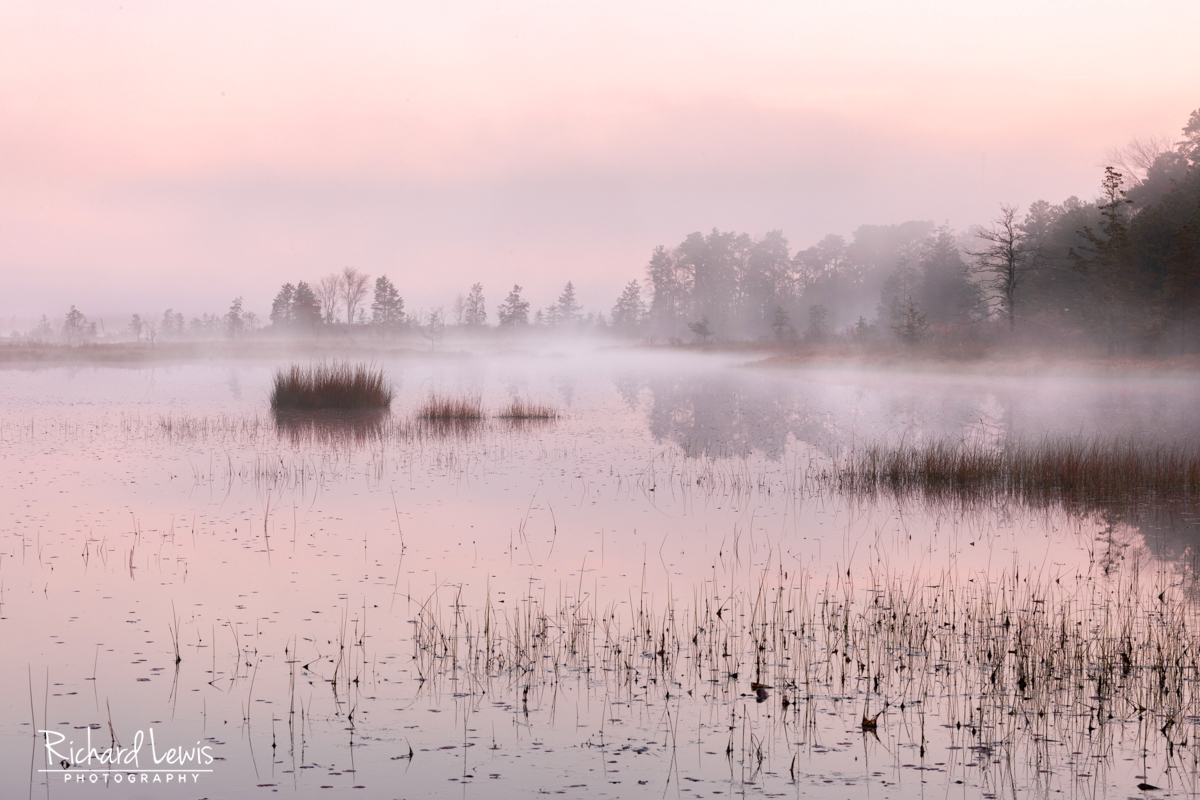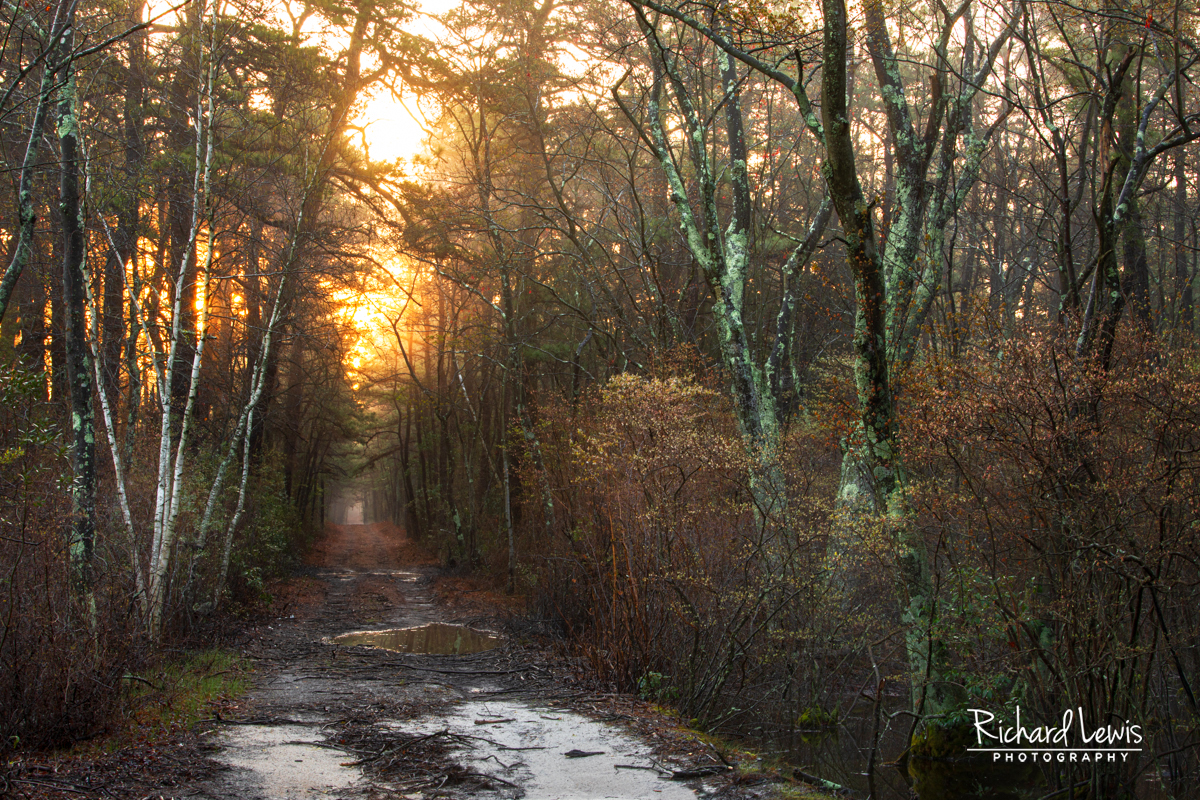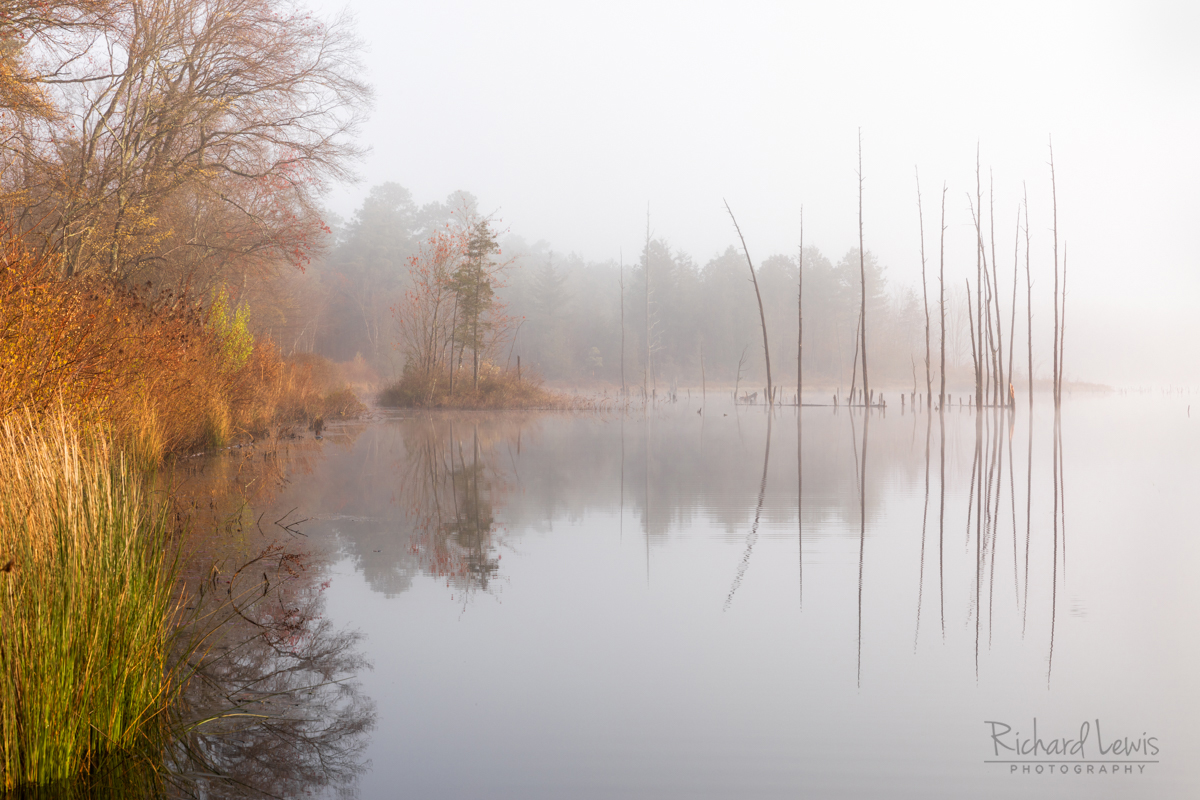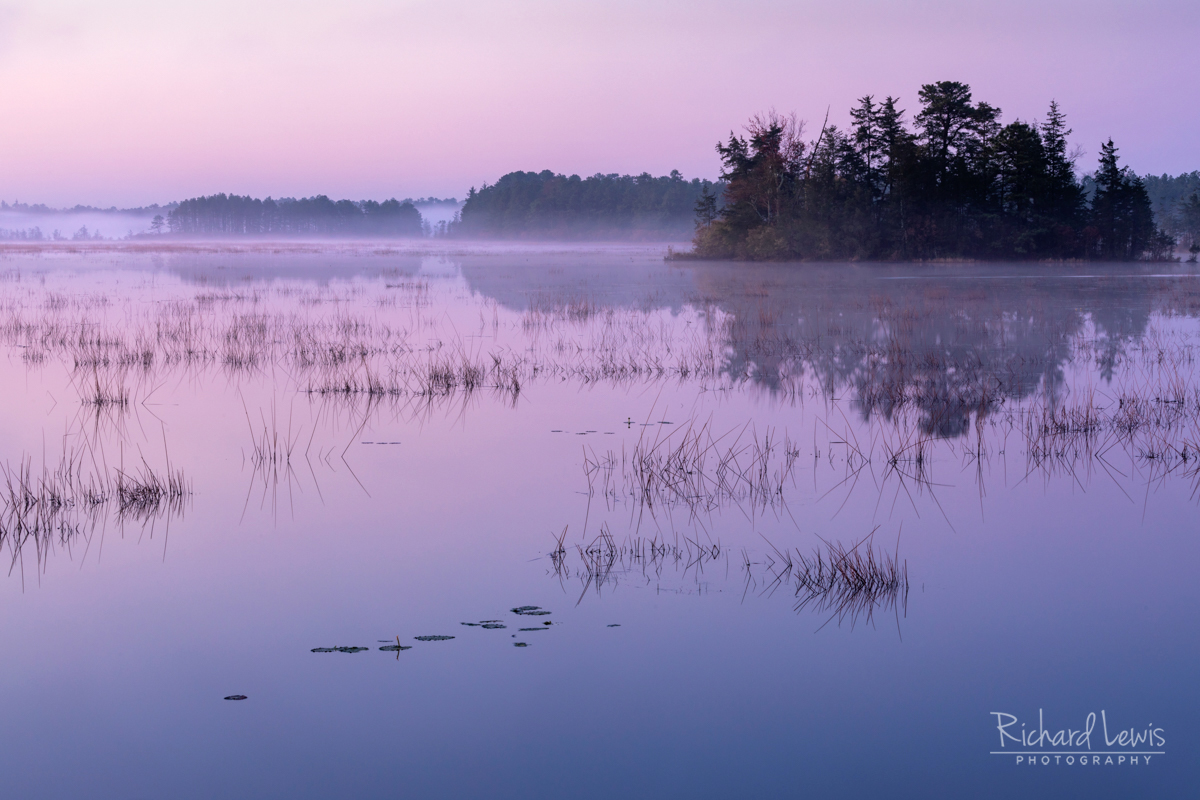The Home Field Advantage
Landscape photography is a crowded field. When I first started out in the 1980’s, there were a couple of dozen well known landscape photographers out there. Now you can’t go to a scenic spot in a national park without having to work your way through a sea of tripods. Do a web search on those places and the results will show a lot of photographs, many of them really good. How can you make your landscape photography stand out? Read on.
Shoot Local and be the Expert
The best landscape photographs are made by photographers who really know the area they photograph. Usually it’s because they live there. Let’s call it the Home Field Advantage. But you don’t live near Yosemite, the Grand Canyon or The Tetons. So what? There is beauty everywhere and the more challenging your local landscape is to photograph, the more you will improve your skills by creating great photography there.
I live in the New Jersey Pine Barrens. It’s a flat, sandy coastal plain that has an endless forest of scraggly pine trees. On the surface, it is about as non-iconic a place as you can imagine. But, spend some time here and get to know it, and you will find a place of unimagined beauty. The Pines aren’t unique in that way. Get to know any area and you will soon start to see what is special about it.
Here is a story of one morning in the Pine Barrens. It started out by following a plan, but when conditions changed, the Home Field Advantage allowed me to understand what was happening and take advantage of it.
The Photoshoot
The image above and the next two images were carefully planned for inclusion in a book I’m writing. (More on that soon.) That plan happened when weather forecasts showed a strong possibility of morning mist. Mist was the key element I wanted to use to enhance the beauty of this large lake in the MakePeace Wildlife Management Area.

Misty Morning by Richard Lewis 2020

Mist And Fog by Richard Lewis 2020
Keeping Your Eyes Open
The mist was expected, but not that fog bank that rolled in after sunrise when the mist usually dissipates. That lead to more opportunities to keep shooting. Fog tends to be more all-encompassing than mist. I was in an open area on the edge of a lake and knew the fog would obscure most of the details in the distance that were important. It was time to move. Fortunately, there was a spot nearby that might just work. I’d never been there but from what I had seen on a satellite map, it had everything I needed.
As I was packing up my gear, I looked up and saw how the sunrise was creating a golden glow on the fog tinted forest. Looking around is something every photographer should be doing all the time. If I wasn’t paying attention, I may have missed, or dismissed the opportunity to create this image.

Another Day by Richard Lewis 2020
Best Shot of the Day
To take advantage of the new found fog, I needed a place that had open water, but also had features that could be composed closer to the lens. Here is that Home Field Advantage. Knowing the area gave me two things. One is knowing where to go and even though I had not scouted it, I could be pretty confident that it had what was needed. The result is my favorite photograph of the shoot, maybe even the year so far.

Cedar Whiskers by Richard Lewis 2020
There was an added bonus, too. Just to be standing in this beautiful spot and experiencing a scene like this was magical, especially in the midst of the pandemic.
Here are some tools for taking advantage of surprise conditions:
- Always look around. Don’t get stuck looking in a single direction. The best shot may be somewhere else, even behind you.
- Spend more time. Plan to arrive early and stay late. Take time to explore, especially if you are unfamiliar with a location or it is someplace that isn’t easy to return to.
- Bring more gear than you need. If an opportunity arises it’s good to have what you need to take advantage of it.
- Know the area. If you are shooting locally, you have The Home Field Advantage. When you master the light and possible conditions in an area, you end up knowing when and where to go to get great photographs.
Enjoy!
See more of my Pine Barrens photography here


Great storytelling and instruction.
Thanks Rich! This was one of those shoots I knew would be helpful to others, especially when conditions changed.
Such beautiful photos Rich! One of my favorite spots to shoot on my way to work. Amazing spots to shoot in Makepeace!
Thanks Joyce. Makepeace is a beautiful spot. I’ve gotten to know pretty well in the last few months and can see why you love it.
Thanks Rich it was a great article. Since I have moved to Jersey I have been seeking and searching new locations to shoot thank you Jayo
Thanks Jay. I appreciate the comment. From what I’ve seen of your work it looks like you are doing well searching out locations. Keep it up!
This is one of the places I am going to try & visit, since I don’t live all that far away here in PA. Is the Pine Barrens open now or just parts of it? Great shot’s you have taken.
Thanks Les I appreciate the comment and encourage you to come visit the Pine Barrens. Everything is open at this point to my knowledge.
Many don’t understand the time and HW it takes to be one, dare I say intimate with a subject… and area. You have definitely put in the time and have gained a bond that continues to produce stunning photographs!!
Thanks, as always, Mike. I appreciate your comment and your inspiration! I’ve always sort of cringed when hearing those “nice shot” comments. Sure they mean well but sort of implies that you were walking along and the photograph just appeared, instead of it being the result of hours of scouting a location, and then scouring the forecasts for the right time to go back. I’ve thought about doing a blog post showing the test shots, the failed shots when the weather didn’t cooperate and then one one that actually worked in the same place.
Such beautiful magical images in your wonderful collection of nature and the pine barrens. So hope your tours will be scheduled soon for people to learn how to take great shots with their cameras.
Thanks Marge. I appreciate it. We’ve started scheduling again in the Fall and are looking forward to guiding people out in the Pines again.
Rich, awesome pics!!! You really know how to capture the moment and your descriptions are great. Cheers Alan
Thanks Alan. I appreciate the comment!
Beautiful photos. I particularly love the pinkish lighting in the morning mist.
Thank you. It’s not common for this to happen when it is misty or foggy but when it does it’s really nice.
I couldn’t agree more. This is exactly the same philosophy that I use in my landscape photography. I love reading your posts and can’t wait for your PB book.
Thanks Rafal. I appreciate your comment and support. Your work is an inspiration and has helped me be more personal in the way I work. I hope to have the book out by the end of the year. The writing was easy, the editing is driving me crazy.
Rich, you forgot a few things…..stop trying to photograph everything you see. Instead of taking 150 images on a morning shoot and hoping one is a winner take the image as if it is a winner.
Pretend you only have ten frames to shoot and make the best of them. That will stop you from pressing that shutter button on useless images. With the power of live view every images you take can be perfect for the conditions…then wait for the right conditions.
If you are a fine art photographer what do you need with more than 12 images a year? What are you going to do with them? Learn what is a memorable image and when you make it the smile on your face could break because it is soon wonderful. I have been known to yell in the in responses to taking a smile cracking image. Also, after your RAW conversion you probably won’t have to do more than four actions in Photoshop, sharpening, B/W points, saturation and maybe contrast. Gives you more time to enjoy the image rather than trying to have Photoshop make our image with layer upon layer. Reality is Photoshop can not make a bad image good.
I have been running around the Pinelands for over 60 years and I have access to more memorable locations than most, but only a couple are intimate enough to warrant photographing. In the 15 years I have been photographing the Pinelands I only have 175 images that I would print, all else has been deleted because they will never be printed. What good are they…no need to clog up the storage.
Which brings up another point….if you can’t make a quality print from your image you do not have a good photograph. Photographers who are serious MUST learn to print (even though that may put me out of my income as a printer for photographers). Never settle for less than excellent quality in every image you make.
Thanks for your comment Al. Your way of image making is very commendable and has won my admiration and a lot of recognition for both your skills and the Pinelands. The takeaway I’ve had from teaching and interacting with photographers over the years is that it is difficult to have one philosophy of image making for all photographers. Photography has many approaches and however a photographer wants to interact with their environment is based in their own creative voice. Being true to what the camera sensor records, manipulating an image to express a creative vision, and everything in between is all good. As photographer John Barclay says, “There are no wrong answers.”
I find that photographers tend to start out taking lots of photos. I encourage this with students because it is exploring or hunting for one’s creative voice. Once that is found, maybe you don’t need to take as many photographs, at least until your creative voice changes. Still if a photographer makes 400 or 400,000 images over a lifetime it doesn’t matter as long as those images are important to the maker. Photography is art and art is personal. How someone wants to interact with their world via their camera is something only they can decide. To me the best lesson any photographer can learn is to make photographs for yourself. If other people like them and even want to buy them, well, that is a bonus.
Your last point “Never settle for less than excellent quality in every image you make.” is powerful. It is true for every photographer no matter what their approach is.